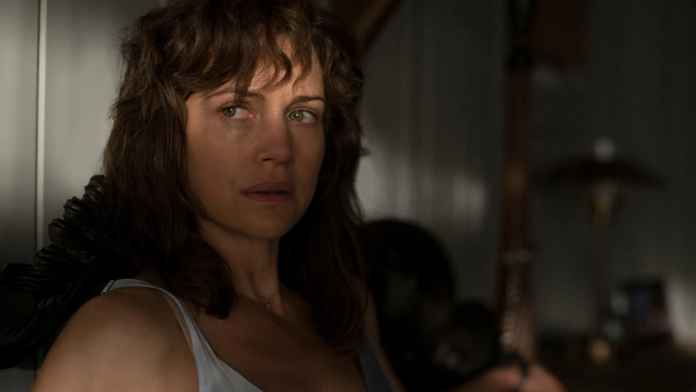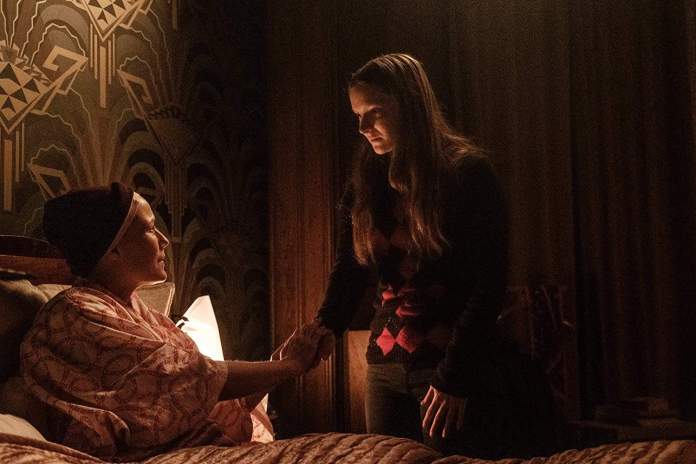
Horror has never been merely about bloody kills and shallow jump scares. In recent times, though, the genre has dug deeper, stripping away layers of loss, suffering, and unseen wounds that people bear. These movies don’t simply try to frighten you; they’re constructed to burrow under your skin and refuse to leave, long after the screen goes dark. If you’ve felt that horror these days feels more intimate, more emotional, and way more haunting, you’re not imagining things. Here’s a countdown of 10 terrifying horror films that put trauma front and center.

10. Martyrs (2008)
Pascal Laugier’s French cult horror classic is notorious for its unapologetic violence, but under the intense imagery is a harrowing reflection on pain, survival, and the search for meaning in agony. Tracing Lucie and Anna, two childhood victims turned avengers, the movie takes audiences through physical and mental agony. It’s savage, unflinching, and impossible to forget, making Martyrs one of horror’s most ambitious trajectories of trauma.

9. Titane (2021)
Julia Ducournau’s Cannes-winning fever dream combines body horror with identity, transformation, and trauma in horrifying ways. Having narrowly survived a childhood car accident, Alexia carries with her both physical blemishes and profound emotional scars. What ensues is an awkward, disturbing quest for rebirth that tests notions of love, acceptance, and self. Equally grotesque and surprisingly tender, Titane is a singular tale that persists in your head long after the credits roll.

8. The Babadook (2014)
Jennifer Kent’s breakthrough film is not merely a monster movie, ie, it’s a raw allegory for mourning. Amelia, a grieving mother, is consumed by a malevolent presence from an eerie children’s book. But the “Babadook” is actually grief itself, insidious when disregarded and more powerful the longer it’s repressed. Supported by Essie Davis’s phenomenal performance, this movie subverted the metaphor of living with trauma into one of contemporary horror’s most lasting images.

7. Under the Shadow (2016)
Set in Tehran during the Iran-Iraq War, Babak Anvari’s Under the Shadow fuses the horrors of conflict with the supernatural. Shideh, a mother struggling to protect her daughter during air raids, discovers a djinn feeding on her fears. The confined apartment setting, combined with political tension and supernatural dread, makes the story deeply unsettling. It’s a slow-burning horror that hits on multiple levels: personal, cultural, and psychological.

6. A Tale of Two Sisters (2003)
This South Korean gothic horror, directed by Kim Jee-woon, examines grief, shame, and broken memory via a spooky ghost story. Su-mi comes home from a psychiatric hospital following a family tragedy, only to encounter strange visions and dark apparitions within her own home. With its dreamlike texture, horrific plot turns, and affective character study, A Tale of Two Sisters is as much a visual spectacle as it is a haunting portrait of trauma.

5. Hereditary (2018)
Ari Aster’s first feature is one of the most unnerving family dramas ever committed to film. In the aftermath of the death of their grandmother, the Graham family descends into madness as suppressed trauma and paranormal forces combine. It’s not so much the occult horror in Hereditary that makes it so horrifying—rather, the crushing burden of loss and dysfunction. Toni Collette’s performance, particularly her depiction of maternal suffering, has become symbolic in contemporary horror.

4. Gerald’s Game (2017)
Mike Flanagan brings Stephen King’s novel to life as a tense chamber drama of survival and remembrance. When a bondage game turns gruesomely awry, Jessie is handcuffed to a bed alongside her deceased husband. While trying to free herself, she’s compelled to deal with submerged recollections of abuse and trauma. Claustrophobic and grim, Gerald’s Game is an unflinching examination of how words left unspoken can define, and almost destroy, a life.

3. Saint Maud (2019)
Rose Glass’s feature debut combines psychological horror with religious fanaticism. Maud is a lonely nurse with a troubled history who becomes obsessed with saving the soul of her patient. What starts as piety spirals into madness and obsession, with trauma propelling her further down. Saint Maud is unsettling in its reserve, and its conclusion is shocking and heartbreakingly devastating. It’s a study in loneliness, in faith, and in a desperate need for significance in pain.

2. It Follows (2014)
David Robert Mitchell’s independent horror turns trauma into a literal curse. Jay is stalked by a figure that never ceases moving towards her. Invisible to everyone else, its presence is relentless—a metaphor for how trauma haunts survivors wherever they move. The unnerving synth score, dreamlike imagery, and building terror make It Follows one of the most distinct contemporary horrors.

1. Carrie (1976)
The pioneering queen of trauma horror, Brian De Palma’s Carrie, continues to endure. Sissy Spacek’s portrayal of the timid, battered teenager driven to the brink of madness is heart-wrenching yet frightening. Her telekinetic abilities are the ultimate manifestations of pent-up rage and humiliation and culminate in one of the most memorable finales of cinematic history. Even decades after its release, Carrie remains a potent reminder of how cruelty and abuse can unleash unfathomable consequences.

They show that the most frightening monsters don’t have to be supernatural. Trauma itself, pain, loss, grief, and abuse, can be much more horrifying than any demon or ghost. Whether dressed up in metaphor or stripped bare in unvarnished storytelling, every one of these films makes us see the wounds we live with. Just don’t think you’re going to sleep soundly afterward.